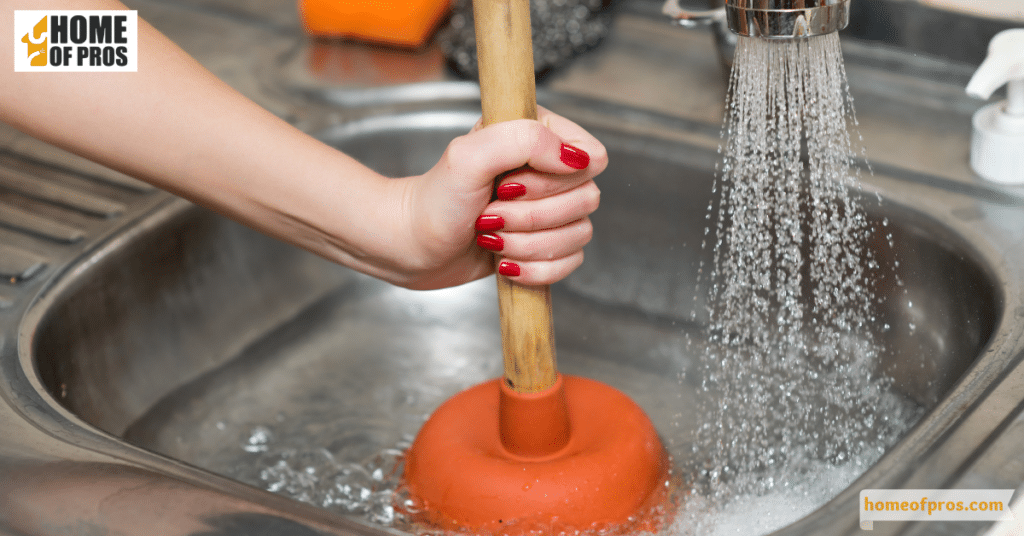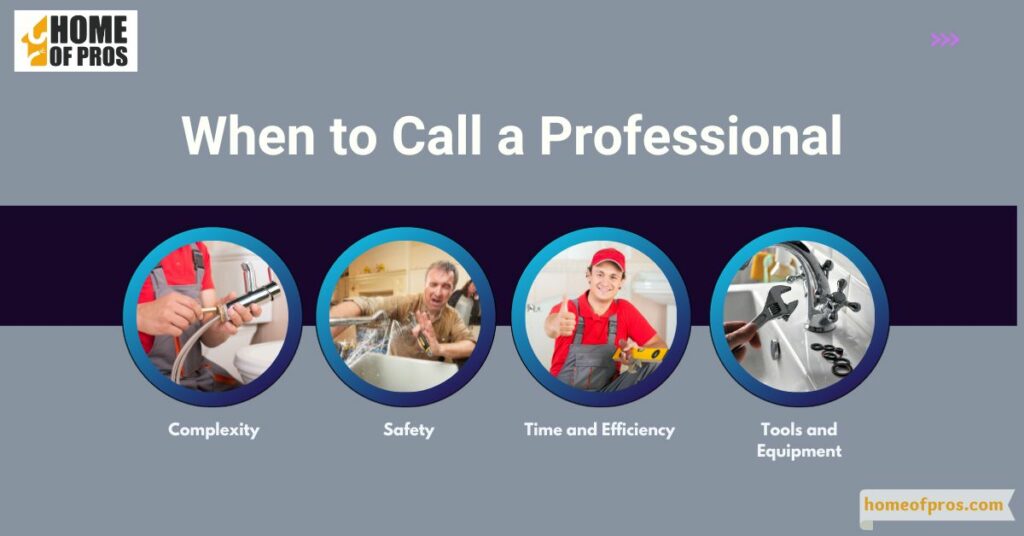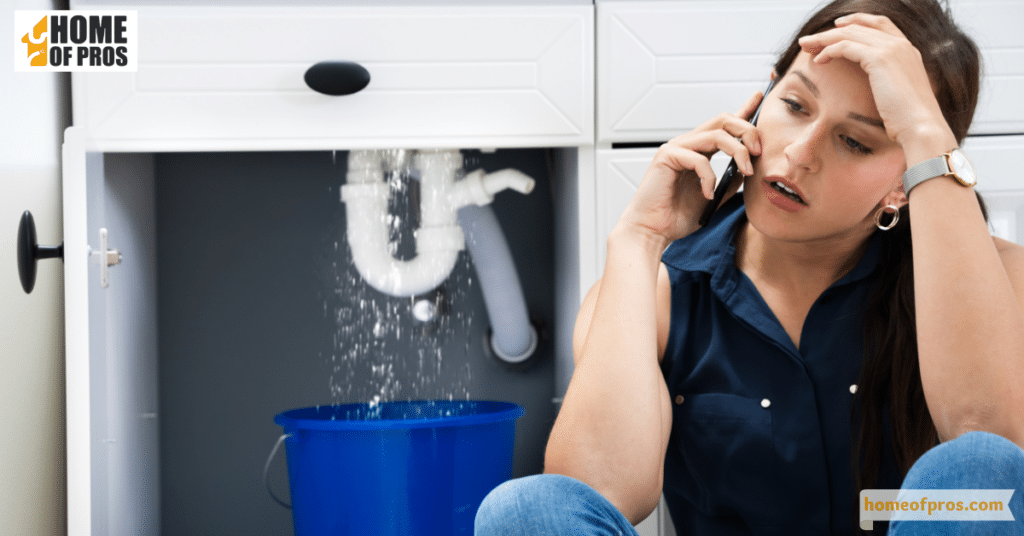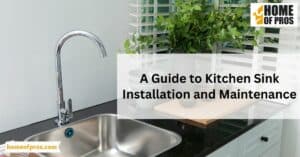In a plumbing emergency, swiftly shut off the main water valve to prevent extensive water damage. Avoid using any electrical appliances near the affected area to ensure safety from potential electrical hazards. Contact a professional plumber immediately to assess and repair the issue, ensuring a quick and efficient resolution.
Every homeowner dreads the sudden onset of plumbing issues. From the simple drip of a leaky faucet to the alarming rush of a burst pipe, these problems can quickly escalate if ignored. Addressing them promptly not only prevents costly damages but also safeguards the health and well-being of the household.

Recognizing the Signs of a Plumbing Emergency
The plumbing system, the quiet workhorse of a home, rarely grabs our attention until something goes amiss. Often, subtle deviations from the norm can hint at larger, looming troubles. Being attuned to these signs can spare homeowners a lot of grief and expense.
1. Key Indicators
Unexpected Noises: Sounds from your plumbing system are more than just background noise; they’re a form of communication. A gentle gurgle from your drain might signify a minor blockage, while a louder, more persistent gurgling could indicate a significant obstruction or trapped air.
Hissing noises might suggest a leaking valve or pipe, and sudden, loud banging, often called ‘water hammer,’ can result from water suddenly stopping or changing direction, indicating potential pressure issues. These sounds, especially if new or growing louder, warrant immediate investigation.
2. Water Accumulation
Stumbling upon damp spots on your walls, ceilings, or floors isn’t just inconvenient—it’s alarming. Puddles or unexpected water accumulation can signal anything from minor leaks in your plumbing system to severe pipe ruptures. Over time, even minor leaks can cause extensive damage to a home’s structural components, erode foundation materials, and provide the perfect breeding ground for mold and mildew, which come with their own health hazards.

3. Water-Quality Changes
Clean, clear water is a sign of a healthy plumbing system. However, if your water starts to adopt a reddish-brown tint, it might be due to rusting pipes. Cloudiness can be caused by air in the pipes or excessive mineral content, while an unexpected, unpleasant odor could point to bacterial growth or problems with the sewage or septic system. These changes in water quality can impact the health of those using the water and also indicate potential damage to the plumbing infrastructure.
Our homes speak to us through subtle cues. Recognizing these early signs in your plumbing system is akin to understanding a language of preservation and prevention. By acting promptly upon these signals, homeowners not only protect their investment but also ensure a safe and comfortable living environment for their families.

Immediate Actions to Take
When faced with a plumbing disaster, quick thinking and immediate action can make all the difference. It’s essential to be armed with the right knowledge to prevent further complications and potential damage.
Table:
| Action | Steps/Precautions |
|---|---|
| Shut Off the Main Water Valve | 1. Locate the main shut-off valve (often in basements or near water heaters).<br>2. Turn the valve clockwise (right) until tight to stop water flow. |
| Safety Precautions | 1. Stay clear of electrical appliances or outlets near water.<br>2. Advise everyone to avoid walking through standing water to prevent slips and potential electrical hazards. |
| Employ Temporary Solutions | 1. Use buckets to collect dripping water.<br>2. Lay towels around areas with minor leaks to absorb excess water.<br>3. Apply sealants to minor leaks as a temporary measure until professional repair can be done. |
In the chaos of a plumbing emergency, having a clear plan can be your saving grace. By following these immediate actions, you ensure safety and mitigate the severity of the situation, buying crucial time until professional help arrives.
When to Call a Professional
In the era of DIY tutorials and self-help guides, it’s tempting to tackle every challenge ourselves. However, there are definitive moments when calling in a professional is the wisest course of action.

- Complexity: Venturing into the world of DIY can be exciting, but some tasks can quickly become intricate and confusing. Without a comprehensive understanding of the job at hand, one can easily find themselves out of their depth. Complex tasks often come with layers of intricacies that require a nuanced approach, rooted in years of professional experience.
- Safety: Tackling home projects on your own might seem like a way to save money, but safety should always be paramount. A slight oversight or a lack of knowledge can lead to accidents, sometimes with serious consequences. Professionals are not only trained in the task itself but also in how to handle potential risks.
- Time and Efficiency: Professionals, with their expertise and experience, have a streamlined approach that ensures efficiency. They can troubleshoot problems faster and know the most effective techniques, ensuring the job is completed within a reasonable timeframe.
- Tools and Equipment: While some basic tasks might require only standard tools, more specialized jobs often demand tools that can be expensive to buy or hard to find. Professionals invest in high-quality equipment and maintain it to ensure they’re always ready for the task at hand.
Embracing the DIY spirit is commendable, but recognizing when to call in the experts is crucial. By doing so, you ensure the best outcome for your project while prioritizing safety and quality.
Preventive Measures for Future Emergencies
It’s often said that an ounce of prevention is worth a pound of cure. This holds especially true for home emergencies, where foresight and routine maintenance can be the difference between a smooth-running household and unexpected chaos.
- Routine Maintenance:
- Regular Inspections: Periodically checking systems and structures, such as plumbing, roofing, and electrical circuits, can identify potential issues before they escalate.
- Cleaning and Upkeep: Activities like cleaning gutters, flushing water heaters, and servicing HVAC systems can prevent long-term damage and inefficiencies.
- Replacing Worn-Out Parts: Proactively replacing parts showing wear and tear, like washers in faucets or filters in HVAC systems, prevents sudden breakdowns.
- Importance of Maintenance:
- Cost Savings: Addressing minor issues before they become major problems can save significant repair or replacement costs in the future.
- Longevity: Regular maintenance can extend the life of appliances, fixtures, and home systems, ensuring they serve you well for years.
- Safety: Routine checks can prevent dangerous situations, like electrical fires or gas leaks, ensuring a safer living environment for your family.
Being proactive in-home care not only wards off emergencies but also fosters a sense of security and well-being. By investing time and effort in preventive measures, homeowners can enjoy a peaceful, efficient, and safe living space for years to come.

Conclusion
In today’s fast-paced world, it’s easy to adopt a reactive approach, addressing issues only when they arise. However, when it comes to our homes, a proactive stance—emphasizing regular maintenance and early detection—can make all the difference. By prioritizing preventive measures and understanding the value of professional expertise, homeowners can safeguard their investments, ensure the safety of their loved ones, and foster a serene and harmonious living environment.












